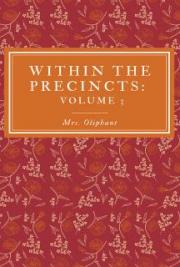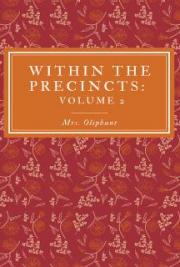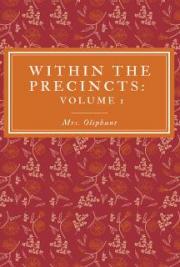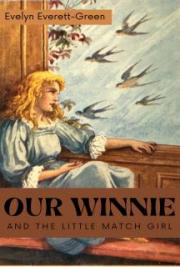FOOTNOTES
{4} Baumeister, p. 94, and note on Hymn to Hermes, 51, citing Antigonus Carystius. See, too, Gemoll, Die Homerischen Hymnen, p. 105.
{13} Journal of Hellenic Society, vol. xiv. pp. 1-29. Mr. Verrall’s whole paper ought to be read, as a summary cannot be adequate.
{16a} Henderson, “The Casket Letters,” p. 67.
{16b} Baumeister, “Hymni Homerici,” 1860, p. 108 et seq.
{18} Die Homerischen Hymnen, p. 116 (1886).
{23a} Journal Anthrop. Inst., Feb. 1892, p. 290.
{23b} (Op. cit., p. 296.) See “Are Savage Gods Borrowed from Missionaries?” (Nineteenth Century, January 1899).
{24} Hartland, “Folk-Lore,” ix. 4, 312; x. I, p. 51.
{30} Winslow, 1622.
{34} For authorities, see Mr Howitt in the Journal of the Anthropological Institute, and my “Making of Religion.” Also Folk Lore, December-March, 1898-99.
{37a} Manning, “Notes on the Aborigines of New Holland.” Read before Royal Society of New South Wales, 1882. Notes taken down in 1845. Compare Mrs. Langloh Parker, More Australian Legendary Tales, “The Legend of the Flowers.”
{37b} Spencer and Gillen, “Natives of Central Australia,” p. 651, s.v.
{39} For the use of Hermes’s tortoise-shell as a musical instrument without strings, in early Anahuac, see Prof. Morse, in Appleton’s Popular Science Monthly, March 1899.
{41} Gemoll.
{44} “Golden Bough,” i. 279. Mannhardt, Antike-Wald-und Feldkulte, p. 274.
{45} Howitt, Journal Anthtop. Inst., xvi. p. 54.
{46a} The Kurnai hold this belief.
{46b} Brough Smyth, vol. i. p. 426
{46c} Journal Anthrop. Inst., xvi. pp. 330-331.
{59} The most minute study of Lobeck’s Aglaophamus can tell us no more than this; the curious may consult a useful short manual, Eleusis, Ses Mystères, Ses Ruines, et son Musée, by M. Demetrios Philios. Athens, 1896. M. Philios is the Director of the Eleusinian Excavations.
{61} “Golden Bough,” ii. 292.
{62} “Golden Bough,” ii. 369.
{64a} “Golden Bough,” ii. 44.
{64b} Ibid., 46.
{65} Mrs. Langloh Parker, “More Australian Legends,” pp. 93-99.
{66} The anthropomorphic view of the Genius of the grain as a woman existed in Peru, as I have remarked in “Myth, Ritual, and Religion,” i. 213. See, too, “Golden Bough,” i. p. 351; Mr. Frazer also notes the Corn Mother of Germany, and the Harvest Maiden of Balquhidder.
{67} “Golden Bough,” p. 351, citing from Mannhardt a Spanish tract of 1649.
{68} Howitt, on Mysteries of the Coast Murring (Journal Anthrop. Instit., vol. xiv.).
{69} De Smet, “Oregon Mission,” p. 359. Tanner’s “Narrative” (1830), pp. 192-193.
{72} Pater, “Greek Studies,” p. 90.
{74a} “Africana,” i. 130.
{74b} Journal Anthrop. Instit. (1884), xiii. pp. 444, 450.
{74c} Op. cit., xiv. pp. 310, 316.
{75} “New South Wales,” by Barren Field, pp. 69, 122 (1825).
{76a} Aristophanes, Ranæ, 445 et seq.; Origen. c. Cels., iii. 59; Andocides, Myst., 31; Euripides, Bacch, 72 et seq. See Wobbermin, Religionsgeschitliche Studien, pp. 36-44.
{76b} Wobbermin, op. cit., p. 38.
{77} Wobbermin, op. cit., p. 34.
{78} Hatch, “Hibbert Lectures,” pp. 284, 285.
{82} Recherches sur l’Origine et la Nature des Mystères d’Eleusis. Klinikseck. Paris, 1895.
{84} Herodotus, ii. 171.
{85a} Spencer and Gillen, “Natives of Central Australia,” p. 399. The myth is not very quotable.
{85b} Foucart, p. 19, quoting Philosophoumena, v. 7. M. Foucart, of course, did not know the Arunta parallel.
{85c} Journal Anthrop. Inst. (1884), pp. 194, 195, “Ngarego and Wolgal Tribes of New South Wales.”
{85d} Ibid. (1885), p. 313.
{86a} For ample information on this head see Mr. Clodd’s “Tom-Tit-Tot,” and my “Custom and Myth” (“Cupid, Psyche, and the Sun Frog”).
{86b} Panegyr., 28.
{87a} Clem. Alex. Protrept., ii. 77 et seq.
{87b} Harpocration, s. v. 
{87c} Cf.  Hippon, 90, and Theophrastus, Charact. 6, and Synesius, 213, c. Liddell and Scott, s.v.
Hippon, 90, and Theophrastus, Charact. 6, and Synesius, 213, c. Liddell and Scott, s.v. 
{88a} “Sand and Spinifex,” 1899.
{88b} Foucart, pp. 45, 46
{88c} Hymn, Orph., 41, 5-9.
{89a} Heriot, 1586.
{89b} Foucart, pp. 56-59.
{90} Foucart, p. 64.
{91a} Basil Thomson, “The Kalou-Vu” (Journal Anthrop. Inst., May 1895, pp. 349-356). Mr. Thomson was struck by the Greek analogies, but he did not know, or does not allude to, Plutarch and the Golden Scroll.
{91b} Fragments, V. p. 9, Didot; Foucart, p. 56, note.
{95a} Herodotus, Alilat, i. 131, iii. 8.
{95b} “Cities and Bishoprics of Phrygia,” 1895, vol. i. pp. 91, 92.
{104} Callim., H. Apoll. 30.

{115} The Greek is corrupt, especially in line 213.
{121} This action was practised by the Zulus in divination, and, curiously, by a Highlander of the last century, appealing to the dead Lovat not to see him wronged.
{124} A folk-etymology from πυθειν = to rot.
{127} A similar portent is of recent belief in Maori tradition.
{133} See Essay on this Hymn.
{136} In our illustration both the lyre with a tortoise shell for sounding-board, and the cithara, with no such sounding-board, are represented. Is it possible that “the tuneful shell” was primarily used without chords, as an instrument for drumming upon? The drum, variously made, is the primitive musical instrument, and it is doubted whether any stringed instrument existed among native American races. But drawings in ancient Aztec MSS. (as Mr. Morse has recently observed) show the musician using a kind of drum made of a tortoise-shell, and some students have (probably with too much fancy) recognised a figure with a tortoise-shell fitted with chords, in Aztec MSS. It is possible enough that the early Greeks used the shell as a sort of drum, before some inventor (Hermes, in the Hymn) added chords and developed a stringed instrument. Cf. p. 39.
{138} Such sandals are used to hide their tracks by Avengers of Blood among the tribes of Central Australia.
{140} This piece of wood is that in which the other is twirled to make fire by friction.
{141a} Otherwise written and interpreted, “as even now the skins are there,” that is, are exhibited as relics.
{141b} “Der Zweite Halbvers is mir absolut unverstandlich!”—Gemoll.
{144} This is not likely to be the sense, but sense the text gives none. Allen, Journal of Hellenic Studies, xvii. II.
{153} “As if one walked with trees instead of feet.”—Allen.
{156} The passage which follows (409-414) is too corrupt to admit of any but conjectural rendering. Probably Apollo twisted bands, which fell off Hermes, turned to growing willows, and made a bower over the kine. See Mr. Allen, op. cit.
{162a} This passage is a playing field of conjecture; some taking συμβολον = Mediator, or Go-between: some as = pactum, “covenant.”
{162b} There seems to be a reference to the caduceus of Hermes, which some have compared to the forked Divining Rod. The whole is corrupt and obscure. To myself it seems that, when he gave the lyre (463-495), Hermes was hinting at his wish to receive in exchange the gift of prophecy. If so, these passages are all disjointed, and 521, with what follows, should come after 495, where Hermes makes the gift of the lyre.
{164} It appears from Philochorus that the prophetic lots were called thriæ. They are then personified, as the prophetic Sisters, the Thriæ. The white flour on their locks may be the grey hair of old age: we know, however, a practice of divining with grain among an early agricultural people, the Hurons.
{168} Hestia, deity of the sacred hearth, is, in a sense, the Cinderella of the Gods, the youngest daughter, tending the holy fire. The legend of her being youngest yet eldest daughter of Cronos may have some reference to this position. “The hearth-place shall belong to the youngest son or daughter,” in Kent. See “Costumal of the Thirteenth Century,” with much learning on the subject, in Mr. Elton’s “Origins of English History,” especially p. 190.
{170} Shielings are places of summer abode in pastoral regions.
{180} Reading  , Mr. Edgar renders “no longer will my mouth ope to tell,” &c.
, Mr. Edgar renders “no longer will my mouth ope to tell,” &c.
{194}  seems to answer to fauteuil,
seems to answer to fauteuil,  to tabouret.
to tabouret.
{196} M. Lefébure suggests to me that this is a trace of Phœnician influence: compare Moloch’s sacrifices of children, and “passing through the fire.” Such rites, however, are frequent in Japan, Bulgaria, India, Polynesia, and so on. See “The Fire Walk” in my “Modern Mythology.”
{204} An universally diffused belief declares that whosoever tastes the food of the dead may never return to earth.
{205} The lines in brackets merely state the probable meaning of a dilapidated passage.
{214} This appears to answer to the difficult passage about the bonds of Apollo falling from the limbs of Hermes (Hermes, 404, 405). Loosing spells were known to the Vikings, and the miracle occurs among those of Jesuits persecuted under Queen Elizabeth.
{254} There is a gap in the text. Three deeds of Dionysus must have been narrated, then follows the comment of Zeus.





 Hippon, 90, and Theophrastus, Charact. 6, and Synesius, 213, c. Liddell and Scott,
Hippon, 90, and Theophrastus, Charact. 6, and Synesius, 213, c. Liddell and Scott, 

 , Mr. Edgar renders “no longer will my mouth ope to tell,” &c.
, Mr. Edgar renders “no longer will my mouth ope to tell,” &c. seems to answer to
seems to answer to  to
to 


